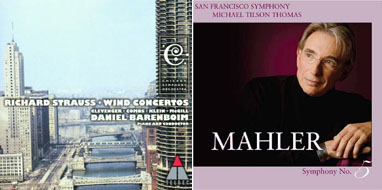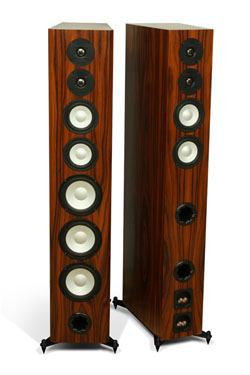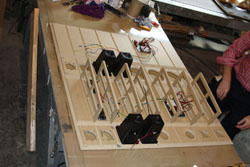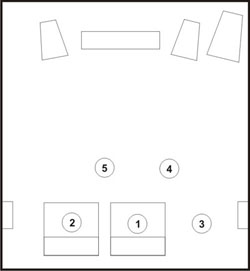Introduction to the Axiom LFR1100 Omnidirectional Speakers and ADA-1500 Power Amplifier
About a year ago, Ian Colquhoun, founder of Axiom Audio, contacted me to talk about an exciting new design he was working on. It was the LFR1100 omnidirectional tower speaker and it represented a radical departure from not only their other products, but from traditional speaker construction. Needless to say I jumped at the chance to review them, but tremendous customer demand prevented me from getting a pair right away. When a surprise phone call came recently asking where I’d like the speakers delivered, I couldn’t help but get excited!
Bipolar speakers are nothing new but Axiom’s approach to designing and building them certainly is. Traditional bipolar designs suffer from placement difficulties as well as a lack of sonic detail because of the inevitable phasing and frequency cancellation issues that result from a mix of direct and reflected sound. Axiom addresses these concerns with technology in the form of a proprietary DSP box that manages phase and frequency response from the two sets of drivers.
I also received an ADA-1500 four-channel power amp to drive the LFRs. Each tower requires two channels of amplification so I needed some extra ones, seven in all, to drive everything. You’ll need four matched channels to drive these unique towers. And because the DSP box works its magic between the pre-amp and power amp sections, separates are a must. Let’s see how all this science translates into audio performance.
LFR1100 OMNIDIRECTIONAL SPEAKERS and ADA-1500 POWER AMPLIFIER SPECIFICATIONS
LFR1100 Omnidirectional Speakers
- Design: Triple Vortex; Ported
- Drivers: Four 1″ Tweeters, Four 5.25″ Midrange, Three 6.5″ Woofers
- MFR: 32 Hz – 20 kHz, ± 3 dB
- Crossover Frequencies: 2.3 kHz, 160 Hz
- Nominal Impedance: 4 Ohms
- Sensitivity: 95 dB/1 Watt/1 Meter (In-Room)
- Max Amp Power: 400 Watts
- Min Amp Power: 10 Watts
- Dimensions: 47.5″ H x 9.25″ W x 17″ W
- Weight: 66 Pounds/each
- Price: $3,760/pair USD
ADA-1500 Power Amplifier
- Design: Multi-Channel Power Amplifier
- Output: 200 Watts RMS x 4 into 8 Ohms, 375 Watts RMS x 4 into 4 Ohms
- THD+N: <1%, 20 Hz – 20 kHz, into 4 Ohms
- MFR: 1 Hz – 50 kHz
- Voltage Gain: 29 dB
- Sensitivity (Full Power into 8 Ohms): 2 Volts
- Capacitance: 144,000 µF
- Signal to Noise Ratio: 105 dB
- Inputs: XLR and RCA, 12 volt trigger
- Dimensions: 5.25″ H x 17.75″ W x 16.75″ D
- Weight: 58 Pounds
- Models: 2, 3, 4, 5, 6, 7, 8 channels
- Price: $2,380 – $3,880 Depending on Number of Channels
- Axiom Audio
- SECRETS Tags: Speakers, Axiom, Power Amplifier, Audio
Design of the Axiom LFR1100 Omnidirectional Speakers and ADA-1500 Power Amplifier
The LFR1100 towers set a record, at least for me, of most drivers in one cabinet. Each tower contains eleven; seven in front and four more in the back. The front also has a port at the very bottom with Axiom’s special shaping applied to eliminate chuffing and other related artifacts. At the back are two more ports of the same size and shape. The driver complement is two titanium tweeters, two aluminum midranges, and three aluminum woofers in front; and two pairs of tweeters and midranges at the rear. The rear baffle is angled outwards to further reduce issues with placement near a wall. Because of this, the towers are specific to the left and right.
Fit and finish is up to Axiom’s typically excellent standards. The samples I received were black with a wood-textured vinyl coating that had a nice deep grain and was perfectly applied. Corners and edges were ever so slightly beveled and there wasn’t the slightest mark from the shipping process. A word about that: Axiom takes great effort to package their products for safe and secure delivery. The boxes are heavy-duty corrugated cardboard and stapled shut. Inside, the speakers are protected by a cloth bag and full enclosure foam. There is very little void space in the carton. Everything is shipped via Fedex Ground to the customer. Their customer service is legendary as well. In the unlikely event something arrives damaged, even in the slightest, they will replace it immediately.
Since the towers are four feet tall and relatively narrow, Axiom has included outriggers to widen their footprint. Rubber feet are included and you can specify spikes if you wish. The grills are magnetic (bravo!) and come off in three pieces in front and one in the rear. They’re always fun to remove for guests so you can watch them gasp as all those lovely aluminum drivers are revealed! The cabinets are extremely solid and sound suitably inert when subjected to the rap test. There is no doubt that they are assembled with great care and pride.
That care and pride extends to the LFR’s internal structure as well. The front and rear driver sets are isolated from each other; both physically and electronically. Each set has a passive crossover that creates linear sound power and radiation patterns from the drivers. The interaction between the driver sets is then managed by an outboard DSP that prevents phase errors and frequency cancellations. The drivers only interact with each other in an additive manner. In other words, all of the disadvantages of bi-polar speakers have been addressed and eliminated. Additionally, the mid-range drivers are each housed in a separate sealed enclosure. This tightens up their response greatly. The lower portion of each tower, which is about half the cabinet’s volume, is dedicated to the three 6.5-inch woofers.
You can see in the above photo, the LFR1100 cabinet laid out on a work table. The vinyl is already attached to the underside creating a hinge by which the four panels can simply be folded up into their final shape. The black boxes are the sealed midrange enclosures. And you can clearly see the independent crossovers for each bank of drivers. Note little details like the threaded metal receivers for the screws that secure each driver. No hardware is threaded into the wood itself. Internal cabinet bracing is quite substantial as well with seven MDF parts making contact with all sides of the tower. It doesn’t get more solid than this!
In designing their flagship ADA-1500 amplifier, Axiom took a different path than the more-common Class A/B switching topology; incorporating its own Class D modules. The ADA comes in configurations ranging from two to eight channels. Axiom’s goal here is plenty of clean power delivered as efficiently as possible. Class D does this very well as it wastes far less power in the form of heat than Class A/B designs. The ADA also allocates power dynamically so when those inevitable peaks arise in only one or two channels, the current is there to handle the demand. With multiple channels driven to maximum, there is more than enough power available for even the most difficult to drive speakers.
I asked Andrew Welker, a speaker and amp designer at Axiom, for a technical explanation of the inner workings of the ADA-1500. Here is his response:
“The ADA amplifiers differ mainly in the power supply topology used. We are not fans of switching power supplies which are hard to control from an RF radiation standpoint and are can have longevity issues. This is key when you already have a sophisticated switching system within the amplifier modules themselves and any interference here can be detrimental to performance. Our ADA amplifiers use traditional, high-current linear power supplies with over-specified toroidal transformers and large banks of filter capacitors. This allows for large instantaneous current supply to any amplifier channel that requires it. When a multichannel amplifier is being used in the context of a home theater or multichannel audio system, all channels are rarely called on to deliver full levels at the same time. With a large, shared linear power supply the entire current available can be instantly supplied to a single channel or shared among any number of channels. The Class D amplifiers themselves are our own design using the latest in switching device technology. In the ADA-1500 which you have, each amplifier channel uses two pairs of high current output Mosfets that are capable of delivering many times the current that they will ever see in use. Paired with this, by necessity, is sophisticated protection circuitry that monitors DC offset, output current, multiple power supply voltages, and heat-sink temperature in order to protect both the amplifier and the loudspeakers connected from any fault conditions that might occur.”
I received a four-channel ADA-1500 which is rated at 650 watts per channel (375 watts with all channels driven) into four Ohms. This provides plenty of headroom for the LFR-1100s which are fairly sensitive at 95 dB 1 watt/1 meter (in-room).
Setup of the Axiom LFR1100 Omnidirectional Speakers and ADA-1500 Power Amplifier
The LFR1100s are a bit different than your average tower speaker. Some advance planning will be required to install them into your listening space. First off, they require two channels of amplification each. And since they’re rated at four Ohms, you’ll want a fair amount of current available to make them sing at their best. The ADA-1500 amplifier is more than up to this task. In addition, the magic that happens with the rear-firing drivers is managed by a DSP box that is included with the speakers. This is connected between your pre-amp and power amp. It’s fully balanced so you can use either XLR cables, as I did, or single-ended RCAs. The left and right signals are routed to the DSP, then output over four cables which you connect to your power amp. In my case, I used the Axiom amp to drive the LFRs and my Emotiva XPA-5 to drive the VP180 center and QS8 surrounds. All the speakers were connected with 12AWG cables from Blue Jeans Cable.
Positioning is not as difficult as you might think. The speakers are specific to the left and right spots thanks to a rear baffle that’s angled outward. It is recommended to set them at least 12 inches from the wall. If you have them closer, the DSP has a boundary compensation switch to address the issue. In my case, I placed them 12 inches out and toed in slightly. I did not engage the boundary compensation. My seating was 10 feet away and the speakers were eight feet apart.
I finished the setup by running the Audyssey MultEQ XT room correction routine in my Integra DHC-80.1 surround processor. I used the same measurement procedure I’ve used for all other speaker reviews. To begin, I level-matched all channels to 75 dB before plugging in the calibrated microphone. I placed the mic in five positions and let Audyssey do the rest. Check out the diagram below to see how I measure.
This approach has always given me consistent results no matter what speakers I have in the room. The main thing to remember is to set the microphone to the same height (ear-level) at each position. And use a tripod; holding the mic in your hand will color the measurement.
I quickly learned during the listening sessions that Audyssey EQ was not really necessary, especially for music and two-channel use. These speakers are so well-balanced; any sort of room correction makes little difference in their sound. You still may need some help controlling a subwoofer however. The LFR1100s would be well-matched to a sub that has its own EQ routine like Paradigm’s Perfect Bass for instance. In my setup, I used Audyssey only for movies and turned it off for two-channel music and concert videos.
The Axiom LFR1100 Omnidirectional Speakers and ADA-1500 Power Amplifier In Use

I decided to christen the speakers and amp with one of my favorite concerts, Foo Fighters at Wembley Stadium from 2008. This Blu-ray has some of the best audio I’ve ever heard from a live rock performance. As it began, I immediately noticed a curious sensation on the bottom of my chin and a dry tickle in my throat. Yes, ladies and gentlemen, my jaw was on the floor! The depth and width of the soundstage was simply astounding. And the LFRs begged to be played loud. I usually watch this video a couple of dB under my usual startup volume but this time I had to turn it UP. And twirling the dial never made the tone harsh. It just became more and more present. I’ve experienced a large sound stage before; even to the point where my room disappears completely. The LFRs made it sound and feel limitless. I can’t imagine being more in Wembley Stadium without actually being in Wembley Stadium. And the transparency! That’s not an adjective I usually associate with rock concerts but this one had it in spades. The reverb of both voices and instruments was tremendous lending an incredible sense of spaciousness to the presentation. After the first two songs, I was hooked.
And don’t think for a moment that all this lovely diffusion caused muddiness; quite the contrary! It’s pretty hard for anyone to mix a rock concert where the guitars have any sense of separation. And I couldn’t really tell the difference between Chris Shiflett and Dave Grohl’s tones before. This time though, it was crystal clear. And the spatial cues were much stronger than I had ever heard. The tone of every drum in Taylor Hawkins’ kit took on its own personality, no matter how fast or slow he played.
Another thing I noticed right off was the immense size of the listening window. I often move around the room during listening sessions to hear how well speakers sound off-axis. It’s always easy to hear lobing effects or roll-off of various frequencies; sometimes just moving my head to one side can make an audible difference. With the LFRs playing, I could get up and move from side to side and hear pretty much the same sound no matter where I stood or sat. These speakers are just the thing for a large room with many seats. Even my reference M80s don’t have a listening window this large.

With sound this enormous, I had to try out a couple of blockbuster movies, so I chose The Avengers and The Hobbit: An Unexpected Journey. Both are state-of-the art examples of modern sound design and mixing. The Avengers was pretty much a non-stop thrill ride that produced many physical responses as I watched. My heart beat faster, my breathing quickened and I definitely perspired! The sense of immersion was incredible. The rest of my surround system was unchanged; a VP180 center, QS8 surrounds, and an EP800 sub. There were so many ambient environmental effects going on, I truly achieved sensory overload!
The Hobbit is a bit more subtle in its approach. Here you’ll want a speaker that brings out all the little bits and pieces that add up to an environment. It’s not in your face most of the time so finesse is of the utmost importance. The LFR1100s showed their ability to play soft with the best. I didn’t have to imagine I was walking through the woods with dwarves and elves, I was there, experiencing everything but the poison ivy. The QS8s are excellent surround speakers and the LFRs made them even better thanks to their extra-large sound stage.
Music Listening-
For pure music listening, the LFRs are equally stupendous. I tried mainly stereo CDs and of course, my reference recording of Mahler’s Fifth Symphony in surround SACD format. I switched between various multi-channel and stereo modes and also listened with and without the Audyssey room correction engaged. In general, the eq made little difference which is something I had not experienced with other speakers. Usually it’s quite easy to hear Audyssey’s effect but the LFR1100s had such tremendous presence and depth by themselves, they didn’t really need any help! I listened to dozens of recordings whose quality ranged from amazing to average. I’ve detailed a few standouts below.

I started with the Grammy-winning recording of Chicago Symphony principal players performing the concerti of Richard Strauss. This is a benchmark CD with superb playing and equally superb fidelity. As I listened to Dale Clevenger play the horn concerto, my first impression was of tremendous spaciousness and transparency. Classical music, especially complex compositions like these, can really show the presence of, or lack of, detail in a speaker. The LFR1100s gave me everything and more. The balance was excellent with a refined warmth and truly tactile bass. Yes, even in a classical recording there was bass to enjoy. Using the pre-amp’s Direct mode, I removed all processing and the subwoofer from the mix. These are truly full-range speakers.
Next up was my old familiar Mahler Five SACD from the San Francisco Symphony. Again the sheer width and depth of the sound stage awed me. I have never felt more like I was actually in a concert hall than I did listening to the LFR1100s. In fact, I felt as if I were standing in Michael Tilson Thomas’ spot on the podium. Thanks to the enormous size of the listening window, all the instruments’ individual positions on stage were clearly delineated; so much so I actually turned my head a few times!

Turning to some good old rock ‘n roll, I dropped in the Foo Fighters latest album, Wasting Light, produced by the legendary Butch Vig. Dave Grohl favors layered guitars in nearly all his songs. Sometimes there are as many as eight parts. It’s easy for this to dissolve into a wall of mush, like it does on my car stereo. The LFRs handled this recording with ease. And turning up the volume only served to enlarge the presentation rather than simply making it louder. I suspect my ears would bleed before any harshness ensued.
I was curious to hear the new Van Halen album, A Different Kind of Truth. This recording is fairly bass-heavy and sounds pretty mediocre on most systems. In this case, it was better than ever. Even compared to Axiom’s own M80 speakers, on which I’ve listened to this disc many times, it was markedly better balanced and detailed. For this and all the discs I listened to, the LFR1100s were musically engaging in a way I had not experienced before. In fact, I’d venture to say, these speakers, neutral though they are, will make bad recordings sound better. If anything, the sheer size of the soundstage will help you forget the flaws in your source material.
Conclusions about the Axiom LFR1100 Omnidirectional Speakers and ADA-1500 Power Amplifier
When I bought my first decent surround system, Axiom was my choice, and it’s one I’ve never regretted. Though I’ve listened to many other speakers since then, I always yearn to come home to my Axioms. I started with their middle tower model, the M60, as the anchor for both a living room and dedicated theater system. When I had the opportunity to review their flagship models, the Epic 80-800 system, I purchased them after finishing the article. While every upgrade has made a noticeable improvement in my systems’ sonics, the LFR-1100 is, by far, the biggest leap in quality yet. These aren’t just pumped-up M80s, they are a whole new experience from Axiom.
I’ve always admired the neutrality and honesty of all the Axiom speakers I’ve listened to. The LFR-1100s have taken that concept and added a sense of depth and volume that I didn’t think possible in my listening room. I always look for speakers that melt the walls away and transport me to the concert hall; or into the world of the movie I’m watching. The LFR-1100s did this in a way I didn’t think was possible; especially for a speaker pair that costs less (way less!) than $25,000. I know that’s a bold statement but these speakers have bested some ridiculously expensive products in my mind. If you haven’t considered Axiom before, check out their forum and try to set up an audition. There are willing customers who will invite you to their homes for a listening session. If you already own Axioms, trust me, you want these! The LFR-1100s receive my absolute highest recommendation.







